
The 13th century had just begun, when the year 1212 marked a turning point in the history of what we know today as Andalusia. For the first time, after more than five centuries, a contingent from the Christian kingdoms in the north of the peninsula decisively defeated the Andalusians in the south of Sierra Morena. The victory at Navas de Tolosa was a point of no return for the Christian kingdoms to conquer the Islamic territories, becoming a great opportunity for kings and nobles to increase their possessions. A vision very different from the one felt by the Andalusians, who saw how their society built up over more than five centuries of history was in serious danger.
Regardless of whether we call it conquest or reconquest, it was a conflict that lasted almost eight centuries and became a "tug of war", at the hands of the the political stability of the kingdoms into which the Iberian Peninsula was divided during the Middle Ages. Those defeated in 1212 were the Almohads, the last great Islamic political power to arrive from Africa six decades earlier. Since that defeat, its entire Andalusian political, social and economic structure collapsed and the most economically powerful territory of the Peninsula, Al-Andalus, became an immense site of cruelty and opportunities.

The Peninsula before Las Navas de Tolosa
The first to take advantage of it were the Andalusians themselves. The rulers of the cities stepped forward, rising up against the remnants of Almohad power and proclaiming themselves kings. Two seemed the strongest, Ibn Hud king of Murcia, who extended his dominions to Seville definitively expelling the Almohads in 1231, and Muhammad I who founded the splendid Nasrid kingdom of Granada from the town of Arjona in Jaén. Only the most intelligent could survive, since without the great African armies of the Almohads, military supremacy rested in the hands of the Christian kingdoms to the north.
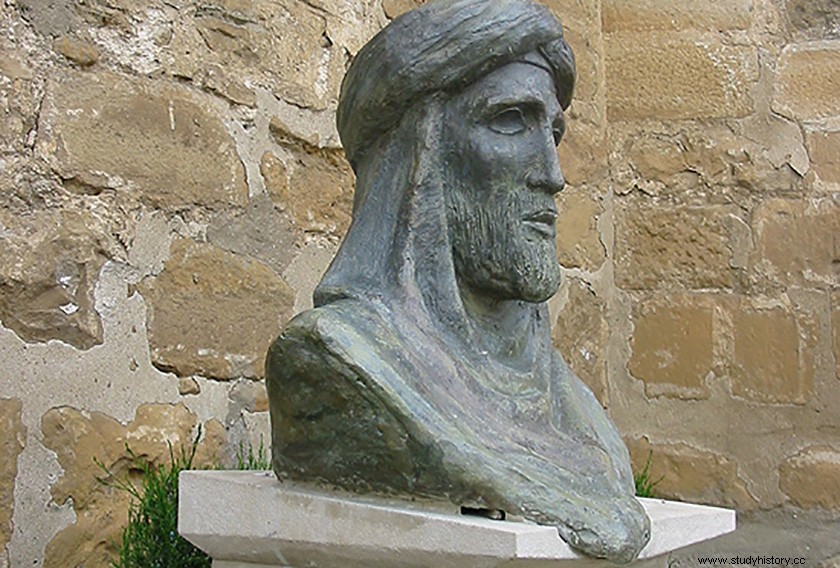
Muhammad I in his hometown Arjona
The confrontation between Andalusians had the Christian kingdoms as frontline spectators. These did not command large armies for a long period like the one that had gone to the Despeñaperros gorge in 1212. Even so, they knew how to take advantage of internal disputes to conquer different places. Castile took control of some medium-sized cities, such as Martos, Andújar or Baeza between the years 1225-1229, thereby controlling access from the north to the main axis of the Andalusian economy, the Guadalquivir valley. While his Leonese neighbors conquered Extremadura, he entered Badajoz at the beginning of the year 1230.
Ferdinand III king of Castile and León (1230-1252)
The most important character in the conquest of the Andalusian territories was born at the same time as the 13th century itself. In 1217, after the accidental death of the young king of Castile, Enrique I, her older sister Berenguela was forced to pick up the Castilian crown and place it on the head of her son Ferdinand, who was only 17 years old. Thirteen years later, Alfonso IX de León, father of Fernando, dies. Castilla y León are once again united under the same king, Fernando III.
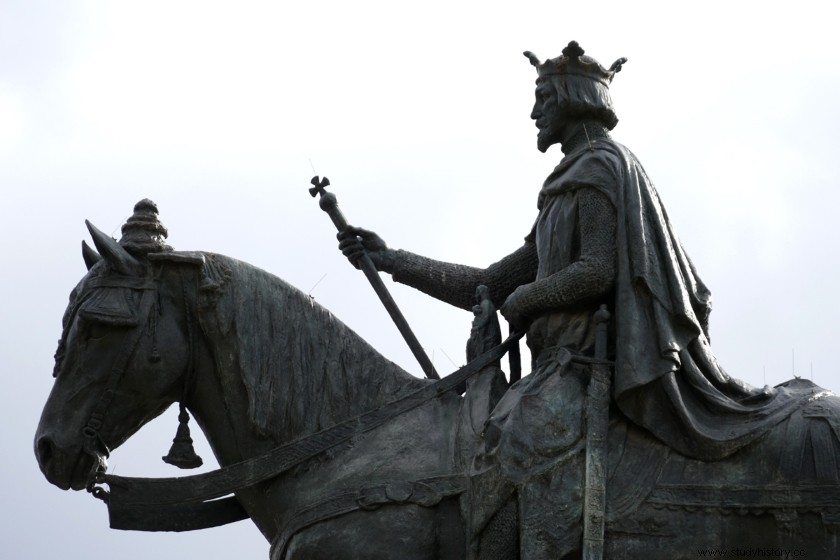
Ferdinand III in Seville
It was time to recommission the great armies to conquer Al-Andalus. Two years after Navas de Tolosa, the main king of that victory, Alfonso VIII, had died, leaving Castile immersed in endless internal battles between the high nobility and without the possibility of gathering a significant contingent of troops. Now, Fernando III had been the meeting point for many of them. In addition, he was not afraid to leave the crown unprotected during his campaigns in the south, the queen mother Berenguela of Castile remained in command of Castilla y León, being the granddaughter of Eleanor of Aquitaine was a guarantee.
The conquests began to arrive through the upper Guadalquivir. Cazorla in 1231 or Úbeda in 1233. A year later the King of Castile began to receive the outcasts of the Kingdom of Murcia, who continued to finance the conquest. The fall of Córdoba, the historic Andalusian capital, occurred by surprise and practically without a battle in 1236, due to serious internal disputes.
The political idiosyncrasies of the Islamic world left control in the hands of the aristocracies of the cities, who were the ones who decided how the city would become governed by Christians. Thus, some capitulated and Castile directly placed their own governors, while others decided to fight and face harsh sieges and battles that decimated their populations. The treatment of the Andalusians was equal to the behavior of their lords, the former were respected and we will soon know them as Mudejars, the latter were slaughtered, enslaved and deported.
In 1243 the heir to the throne, Alfonso, enters the fray. At just over 20 years of age, he leads the Castilian troops that begin the conquest of the kingdom of Murcia.
In 1246, after conquering Jaén, Ferdinand III obtained an important triumph in the dispatches by obtaining the vassalage of the kingdom of Granada, as we mentioned before, only the most intelligent among the Andalusians would survive , and in those moments the best thing was to side with the strongest. From that moment on, the consolidation of the luxurious kingdom of Granada began, which continues to amaze those of us who visit the Alhambra.
In 1247 the great Christian enterprise of conquering Seville began, at that time the main economic city of Al-Andalus which, from its ports to the Guadalquivir river, traded with the entire north of Africa. With the financial support of the rest of the European Christian kingdoms, with the help of all the military religious orders, their Aragonese neighbors and the new Andalusian partners in Granada, the harsh siege of the capital of Guadalquivir begins, a city that will end up capitulating in November 1248 to the king of Castile and León.
Ferdinand III, nicknamed the saint, died a Christian death in the Alcázar of Seville on May 30, 1252, since then his remains rest in the Cathedral of Seville, an unequivocal symptom of the rapid Christianization of the Andalusian capital. Now he left the relief to his successor, Alfonso X "the wise", it was time to put in order the 100,000 km2 of territories conquered by Castile.

The Peninsula at the death of Ferdinand III
Andalusian resistance in the 13th century.
It is difficult to know the feelings that the Castilian conquest aroused in the Andalusians. The truth is that the Nasrid Kingdom of Granada has undergone a significant change of course. From the lost territories, a slow migration of the Andalusians began to be generated, many crossed the strait and others took refuge in Granada. The arrival of these affected in both places in the new events that were forging.
The Mudejar revolt took place from 1264. At that time the Castilian troops at the service of Alfonso X had already taken over the Taifa of Niebla, who reigned in Huelva, and with practically the entire province of Cadiz. In addition to the kingdom of Granada, the only remaining in Andalusian hands were some small independent taifas, attached to the Mediterranean Sea and others that controlled the Strait of Gibraltar, such as Tarifa and Algeciras.
The revolt was instigated by Muhammad I of Granada and occurred in two very different areas, Murcia, which would return to Muslim hands, and especially in Cadiz towns such as Jerez, which would suffer those two years a harsh punishment. That is where the revolt was strongest, which also had the support of Tarifa and Algeciras. The main problem for the Castilians was its proximity to the strait, the place of main entrance of the Muslims to the Peninsula, the fear of Castile was only one; a new invasion.
Without transcendental external support and with Granada more concerned with protecting its territory, the Andalusian rebels were subdued. Two years later the revolt was quelled. The consequences were very harsh in all the Andalusian territories in possession of Castile. The benevolence ended, the mosques that had been respected became churches, and the King of Castile ordered an ethnic cleansing, which led to murders, mass deportations, and Castilian repopulation. Jerez, one of the great Andalusian cities and one of the cradles of the revolt, became a vacant lot of opportunities for the Castilians.
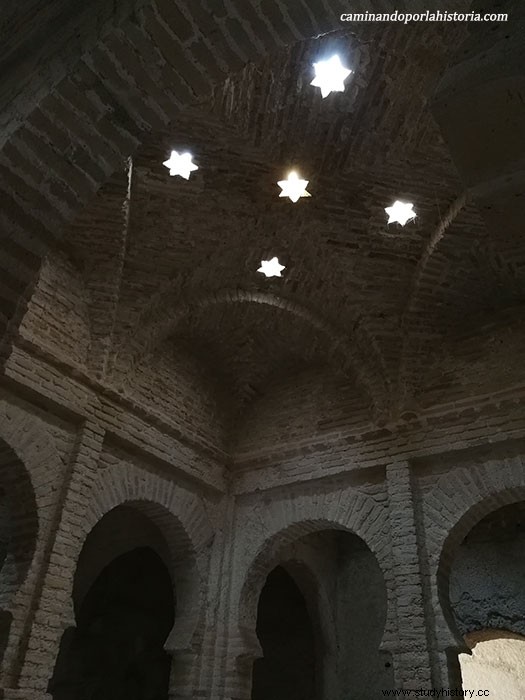
Arab baths of the Alcázar de Jerez, there are few vestiges that remain, but excellent.
Castile's fears were consummated in 1275. A new Muslim contingent crossed the strait, the Benimerines, trying to revive the deeds of the Umayyads, Almoravids or Almohads. In their first incursions, and with the support of the Nasrids, they even reached the upper Guadalquivir, looting cities such as Úbeda. But it was evident that neither the Benimerines were the Umayyads, nor the Castilians, although with serious problems those years, the dilapidated Visigothic kingdom.
In control of the Strait in the 13th century.
It was probably what the benimerines were looking for. At that time, the trade of the Muslim kingdoms with the European kingdoms was intense and in danger due to the situation in the East, with some Crusader kingdoms cornered in Acre. The Strait of Gibraltar was a decisive geographical crossing point and the control of both shores could provide high economic benefits.
As we have meant Alfonso X, he was going through problems. His imperial claims in Germany had fallen on deaf ears. While he was fighting in Castile against the umpteenth noble revolt this time led by his own brother Felipe. In case he needed more trouble, the biggest one came. In 1275, on his way to quell the Benemerí incursion, the Infante Fernando, heir to the throne of Castile, dies.
From that moment on, the complex Castilian laws placed two pretenders to the throne:Sancho, the second son of Alfonso X, and Alfonso, a 5-year-old son of the deceased heir and therefore therefore grandson of the king. King who debates between one and the other while the wicks of a new civil war are generated. Father against son, Alfonso X, in front of Sancho IV, name by which the future king of Castile will be known upon the death of Alfonso X in 1284
The last years of the 13th century witnessed the struggle between Benimerines and Castilians for control of the strait. The toughest battles took place in Tarifa, where in 1294 a character that I want to talk to you about will rise. Don Alonso Pérez Guzmán, who went down in history, as Guzmán the good , a man without origin who will become the owner and lord of the southernmost tip of the Iberian Peninsula.
Juan Luis Pulido Begins.
As we have seen in this quick summary of the 13th century, western Andalusia became a very interesting geographical space for history lovers. A geographical space that went from being called Al-Andalus to being called Andalusia, especially since Alfonso X. A period of cruel coexistence of very different ways of seeing the known world. Two religions that have been confirmed as irreconcilable throughout their history, dragging men and women to fight for a mixture of ideals, difficult to understand in a society that is becoming more secular every day. As the title of our article says, a time of cruelty and opportunities
To explain these periods, historiography usually turns to the characters that are reflected in the sources of the time; kings, nobles or governors mainly. In the same way that the rest of the millions of anonymous characters that populated that territory are forgotten. Fortunately, as is often said, where historiography does not go, comes the tenacity and enormous work of the great historical narrators of this country, to give names and surnames to the people who suffered in their own flesh the cruelty of that thirteenth century.
A period that Juan Luis Pulido Begines knows well , a Sevillian professor of Commercial Law at the University of Cádiz, passionate about history and especially his land. He decided to put his grain of sand to transmit the events that took place there through little-known characters. He has done it with two great novels.
The stones cry for Al-Andalus.
Published by Editorial Almuzara at the beginning of 2019. Its title says it all. A journey through the hardest years of the 13th century, from shortly after the arrival of Ferdinand III to Castilian power, until the end of the reign of Alfonso X. The traveling companions are a family from Jerez, the Banu Quzman, who “curiously” They share a profession with their literary father. Juan Luis Pulido immerses us in the conflict from the Andalusian side, to show us the great cruelty they suffered when they saw everything they believed in and had placed all their hopes crumble.
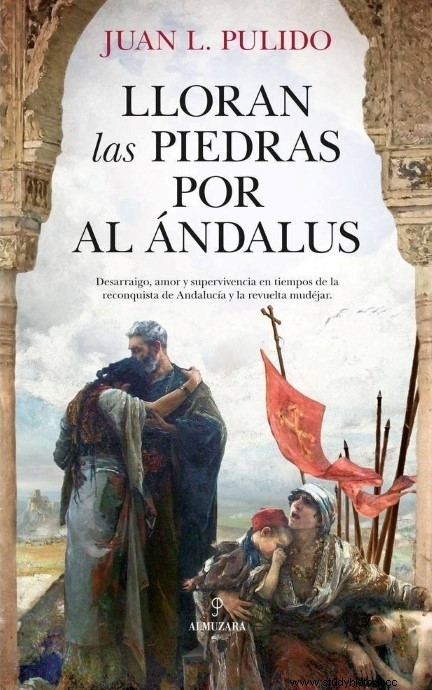
Buy The stones cry for Al-Andalus
Guzmán el Bueno. The lord of the border.
Also published by Editorial Almuzara, in this case in November 2020. In it, Juan Luis Pulido jumps sides to show us the enormous opportunities that have opened up to Christians. A great fictionalized biography of the life of a man with no known past, who became the owner of the south of Cadiz. Let me highlight a character that seemed to me to be exceptionally successful on the part of the author, Zag ben Yuçaf Barchilón, Guzmán's scribe. A Jew who makes us understand first-hand the suffering of this group, largely forgotten by the religious war between Muslims and Christians.
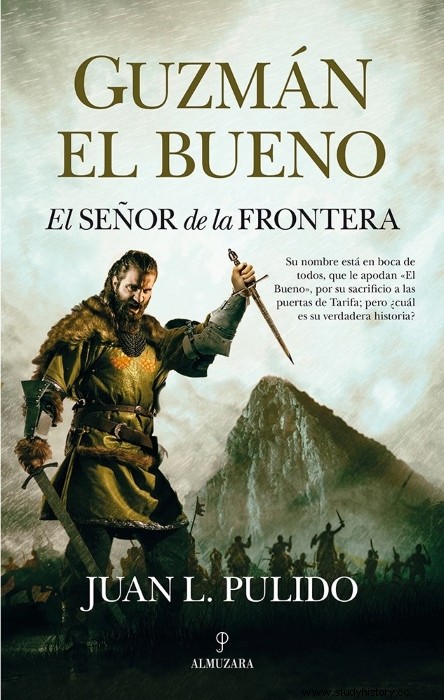
Buy Guzmán el Bueno.
Fonts:
History of Spain in the Middle Ages, Cood. Vicente Ángel Álvarez Palenzuela, Ed. Ariel, 2011.
Historical atlas of medieval Spain, José María Monsalvo Antón.
